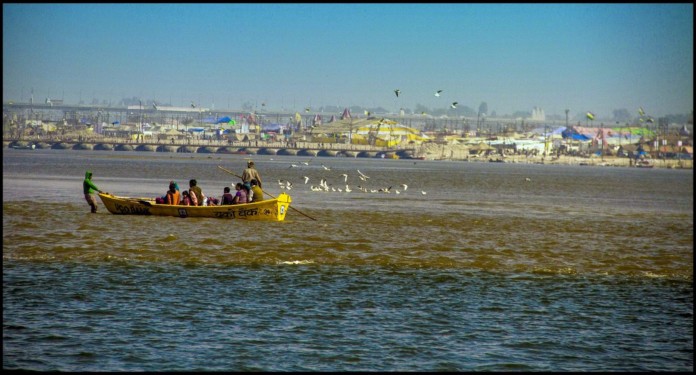In a landmark judgment in March 2017, the Uttarakhand High Court declared the Ganga and Yamuna rivers as living entities, bestowing on them same legal rights as a person. The judges were inspired by another, but first of its kind week old judgment in New Zealand which ruled that the Whanganui River be granted living entity status.
The HC order will allow complaints to be filed in the name of the two rivers. It also gives the Centre eight weeks to set up boards for cleaning and maintaining the rivers. “It means now Ganga and Yamuna rivers will be treated like a natural person but only through a designated person, an advocate told Hindustan Times newspaper.
A bench of Justice Rajeev Sharma and Justice Alok Singh allowed the director general of Namami Gange project, Uttarakhand chief secretary and advocate general the right to represent the Ganga. The two-year old Namami Gange project has been criticized for not making much progress despite enormous funds at its disposal. With BJP government in Uttar Pradesh, the cleaning and conservation project is likely to take off briskly.
The world’s third largest river, the Ganga is the holiest Hindu river and also among the dirtiest in the world, with toxic industrial waste and untreated sewage reducing it to a dirty trickle at several places. Yamuna is no better.
Reverentially referred to as Maa Ganga (Mother Ganga) for the water it provides to millions and fertile plains it feeds, the 2,500km river originates from Gangotri in Uttarakhand and criss-crosses several states before emptying into the Bay of Bengal.
Even Tributaries Included
The order includes all their tributaries, streams, every natural water flowing with flow continuously or intermittently of these rivers, are declared as juristic/legal persons/living entities having the status of a legal person with all corresponding rights, duties and liabilities of a living person in order to preserve and conserve river Ganga and Yamuna.
The justices referred to Articles 48A and 51A (g) of the Indian Constitution which refers to the duty of the state to protect and improve the environment and take care of wildlife, while the second is part of the fundamental duties of an Indian citizen to do the same in their capacity. Article 48A has often been cited by Indian courts in passing judgments in favor of environmental protection.
Can It Be Extended to All Rivers and Lakes
Also, could the logic of this order be extended to all rivers, and beyond that, to all of Nature? At least, it has set a precedent. Movements such as those against dams in Sikkim and against mining in the Niyamgiri hills of Odisha, have cited the sacredness of the landscape. In the latter case the Supreme Court even asked the government to seek consent for mining from the Dongria Kondh adivasi gram sabhas, recognizing their cultural rights. And then again can’t all ecosystems be similarly extended protection?
For more details
https://scroll.in/article/833069/a-court-naming-ganga-and-yamuna-as-legal-entities-could-invite-a-river-of-problems
http://www.thehindu.com/sci-tech/energy-and-environment/can-the-ganga-have-human-rights/article17750148.ece










